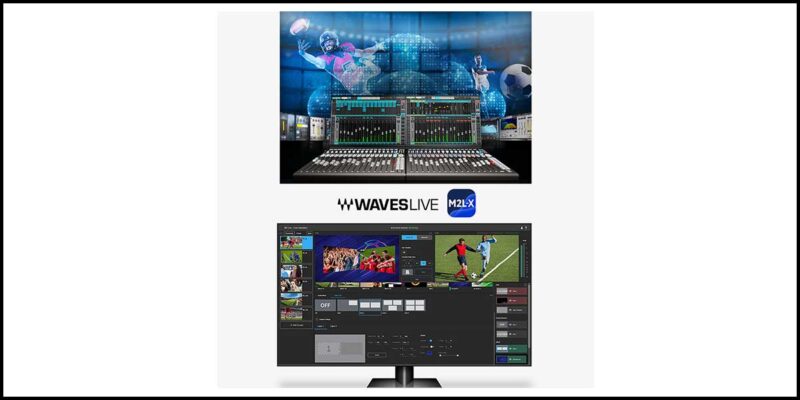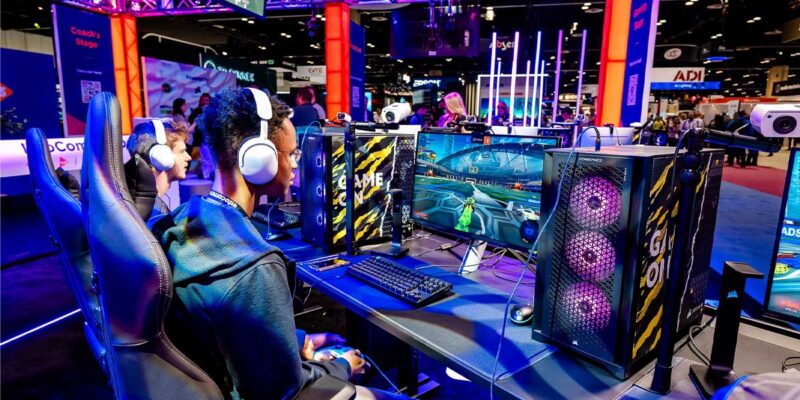The Themes of InfoComm 2019
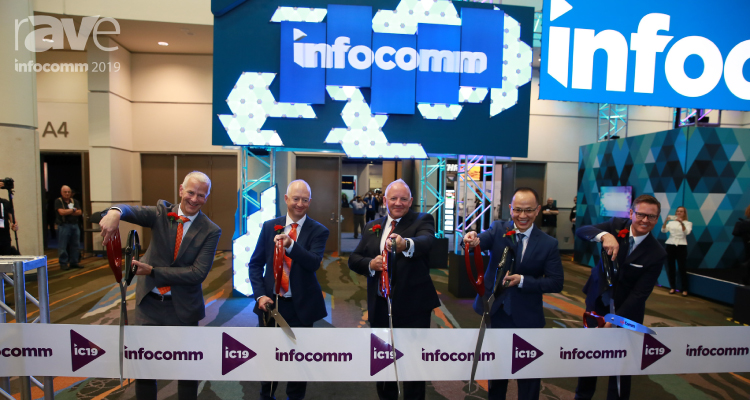
Over the years I’ve been in this industry (this was my 33rd InfoComm — 34th annual show with InfoComm/AVIXA though as my first, back in 1987, the show was called COMTEC — before the name was changed to InfoComm in 1988), the show has evolved from a technology-based show to a product-based show and, more recently, it’s become an applications-based show.
Never was that more apparent than at InfoComm 2019.
First, a GIANT shout-out to AVIXA CEO Dave Labuskes and his team for pulling off a beautiful event. The theming, branding and colorimetry of the show was not lost on me and was likely noticed by all 44,129 attendees (a new record for attendance, by the way). It was stunning. Second, thank you to AVIXA for an extremely fun Friday morning at the first, ever, AVIXA 5K at InfoComm.
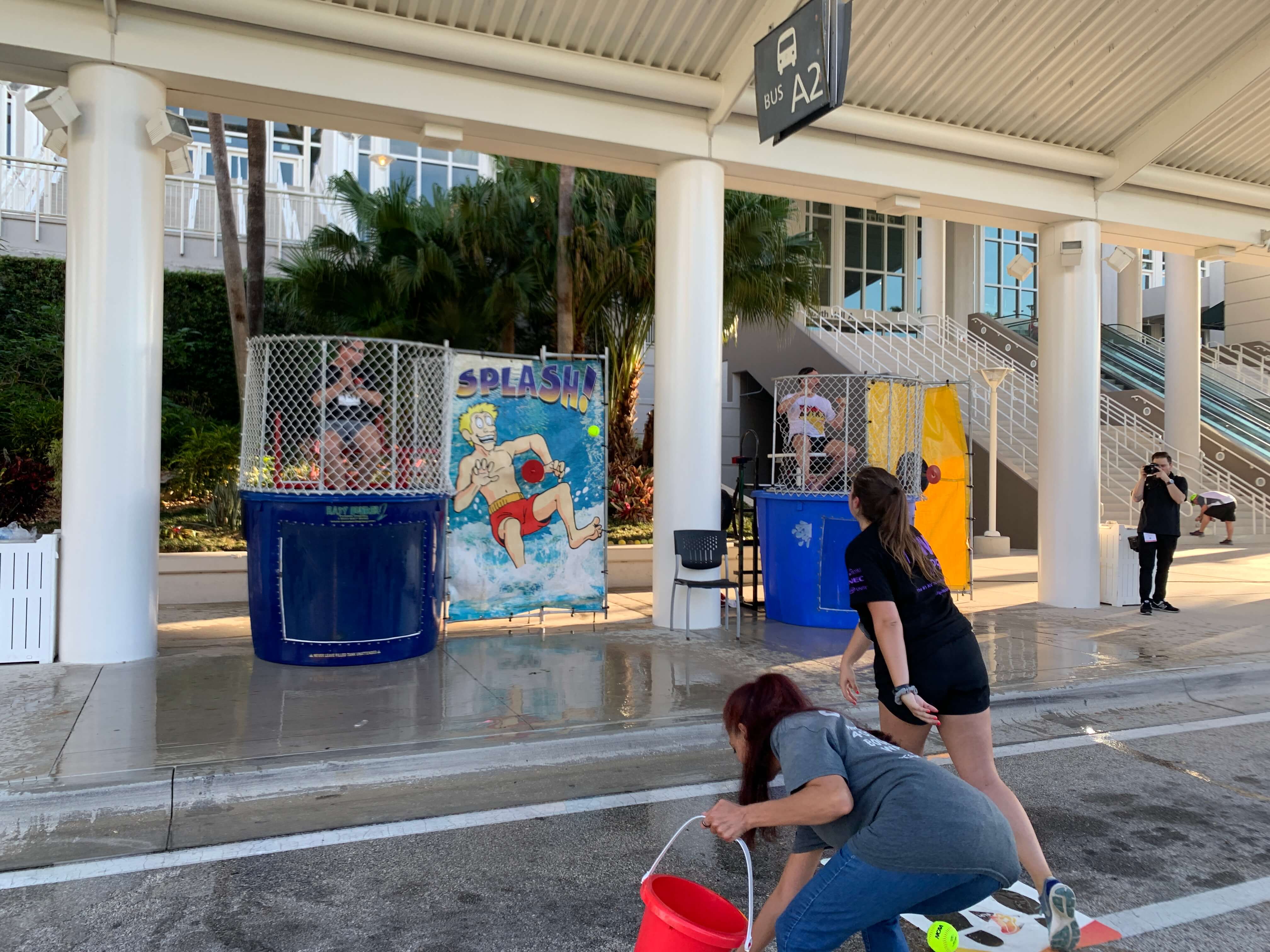 We were proud to be partners with them on it and, thanks to our readers, we donated over $1,500 to the AVIXA Foundation. And, I would be remiss if I didn’t thank my dunk-partner, Chuck Espinoza, who was willing to crawl into a dunk tank, along with me, at 7:30 a.m. — to get dunked at the finish line. And, a special WOW goes out to AVIXA COO Heidi Voorhees, for allowing us to dunk her as a thank you for the work she put into the 5K.
We were proud to be partners with them on it and, thanks to our readers, we donated over $1,500 to the AVIXA Foundation. And, I would be remiss if I didn’t thank my dunk-partner, Chuck Espinoza, who was willing to crawl into a dunk tank, along with me, at 7:30 a.m. — to get dunked at the finish line. And, a special WOW goes out to AVIXA COO Heidi Voorhees, for allowing us to dunk her as a thank you for the work she put into the 5K.
Now, back to the themes of InfoComm 2019:
Collaboration: This one was obvious and was carried over from 2018. I doubt there was a booth on the show floor that didn’t hark the word “collaboration.” Thanks, MOSTLY, to Zoom Video Communications, collaboration is the buzzword that actually means something in AV. They transformed video collaboration over the past half-dozen years from a hardware-based to a software- and cloud-based industry. And, created an entire ecosystem along with it by simplifying the entire process.
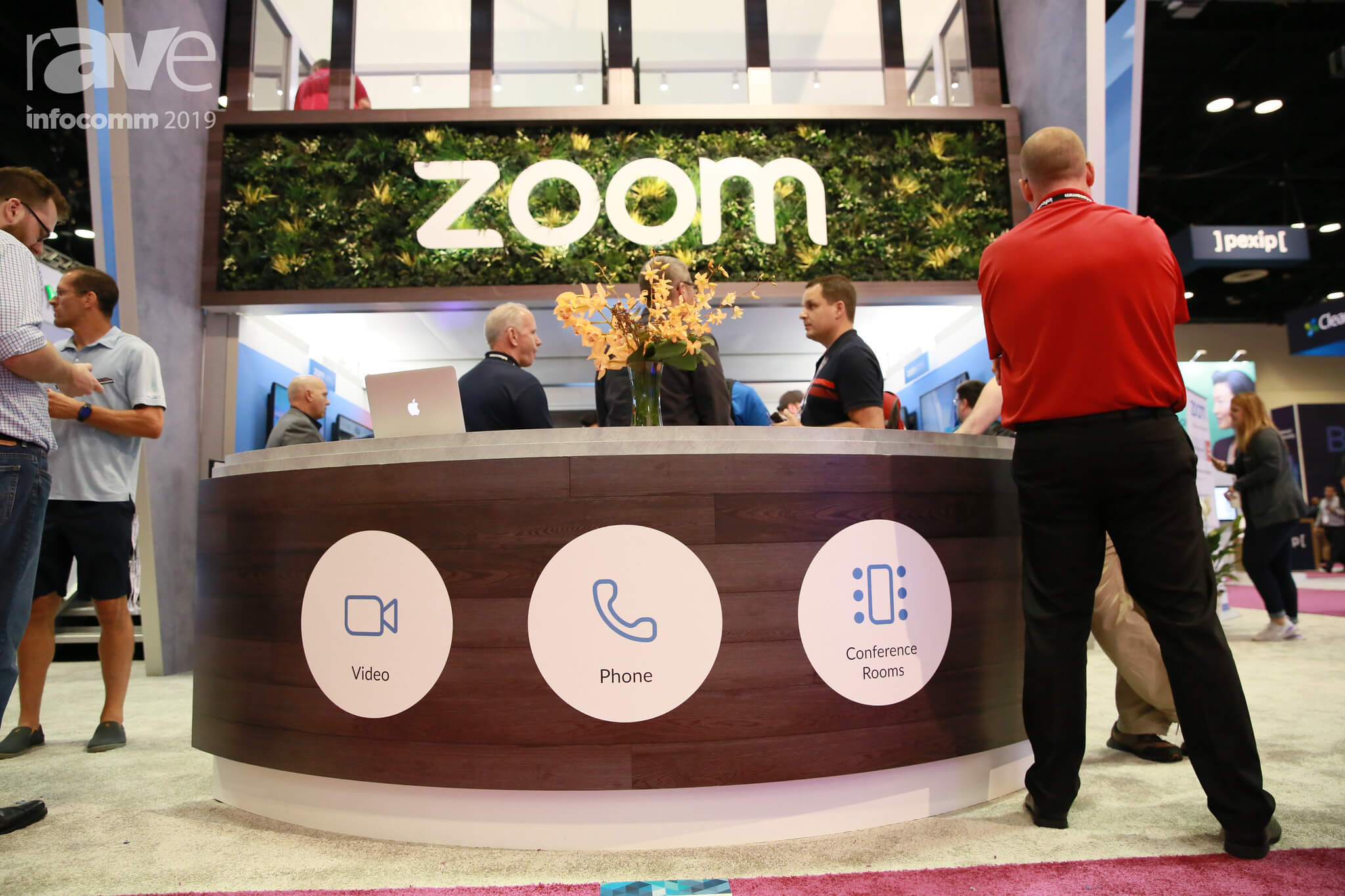 That spawned companies like Avocor and Panacast (now owned by Jabra) as well as products like the Nureva HDL 300 as an upstart called Stem Audio and now a new product line from MXL, too. But, Zoom also helped bring companies like Microsoft (Surface Hub 2), Intel (Unite platform) and one not-to-be-named secret company who was there in a big way showing how they’re getting into collaboration in 2020, in a private suite at this year’s show. So, collaboration as big and getting bigger! Oh, and I’d be remiss if I didn’t say that Microsoft finally figured out collaboration — round three. After two failures at it, Microsoft Teams was all over the place.
That spawned companies like Avocor and Panacast (now owned by Jabra) as well as products like the Nureva HDL 300 as an upstart called Stem Audio and now a new product line from MXL, too. But, Zoom also helped bring companies like Microsoft (Surface Hub 2), Intel (Unite platform) and one not-to-be-named secret company who was there in a big way showing how they’re getting into collaboration in 2020, in a private suite at this year’s show. So, collaboration as big and getting bigger! Oh, and I’d be remiss if I didn’t say that Microsoft finally figured out collaboration — round three. After two failures at it, Microsoft Teams was all over the place.
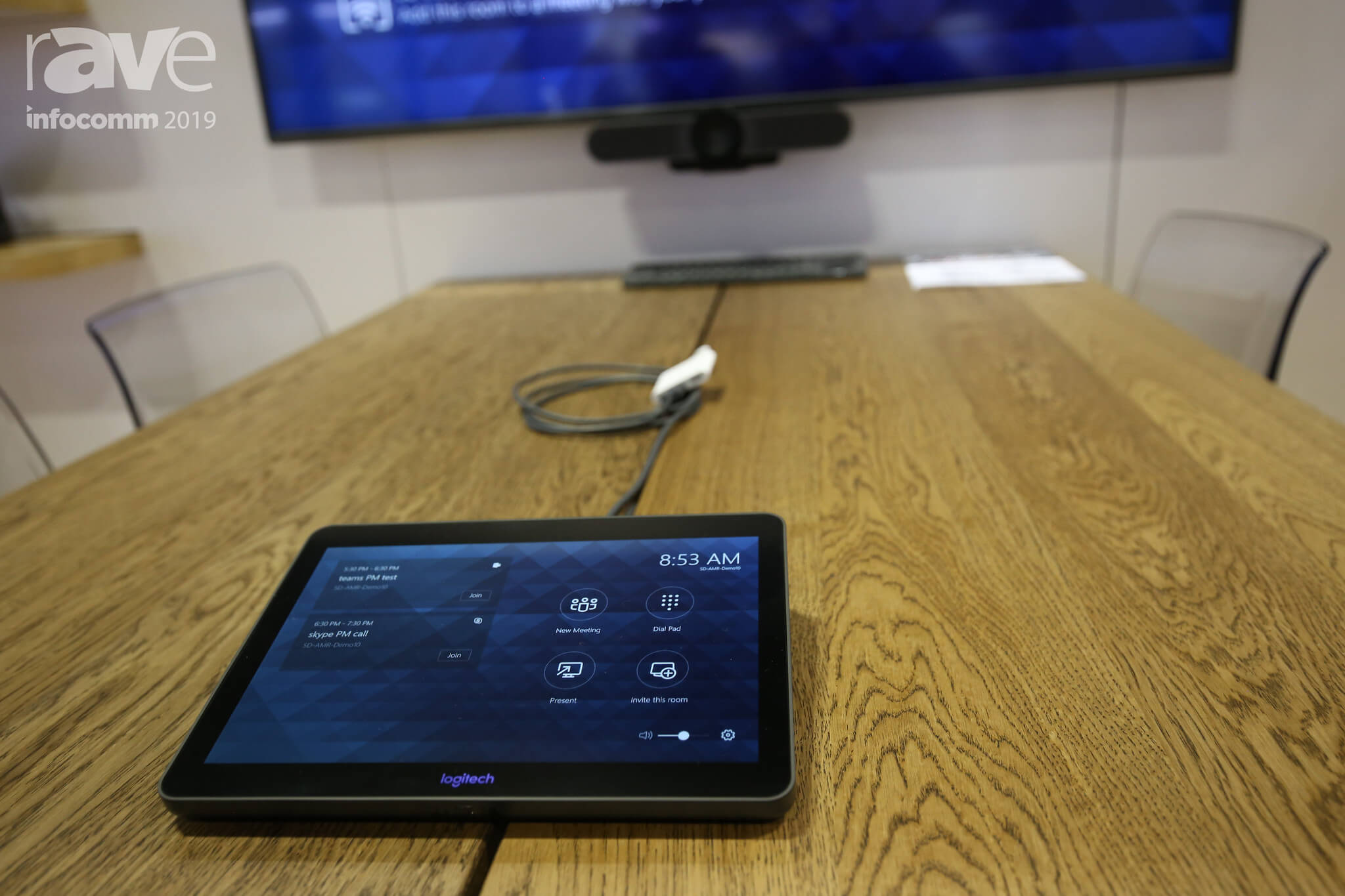 You can’t talk collaboration at InfoComm without mentioning Logitech. They were inside of over 50 booths on the show floor — they’re sort of the glue to collaboration with their lineup of USB-based UCC cameras but it was the Logitech Tap that stole the show. Nearly every videoconferencing company exhibiting at InfoComm either had a Tap or referenced controlling their UCC platform via Tap. Tap packed the booth at ISE for Logitech so I am not surprised it would be that popular at InfoComm and, even though it’s marketed as a touch-screen controller for UCC spaces, it was built via a partnership with Extron so you can use it as a controller to a fully functional Extron Control system, too. Oh, speaking of Logitech, the sleeper-product of the show was likely their Zone headset — I WANT ONE! If you do a lot of UCC on the road, this is THE solution for you. How many times have you been on a UCC call with someone remotely joining using their laptop’s mic and speakers? Ugh! Hey that person, please buy a Zone and make ALL our meetings better.
You can’t talk collaboration at InfoComm without mentioning Logitech. They were inside of over 50 booths on the show floor — they’re sort of the glue to collaboration with their lineup of USB-based UCC cameras but it was the Logitech Tap that stole the show. Nearly every videoconferencing company exhibiting at InfoComm either had a Tap or referenced controlling their UCC platform via Tap. Tap packed the booth at ISE for Logitech so I am not surprised it would be that popular at InfoComm and, even though it’s marketed as a touch-screen controller for UCC spaces, it was built via a partnership with Extron so you can use it as a controller to a fully functional Extron Control system, too. Oh, speaking of Logitech, the sleeper-product of the show was likely their Zone headset — I WANT ONE! If you do a lot of UCC on the road, this is THE solution for you. How many times have you been on a UCC call with someone remotely joining using their laptop’s mic and speakers? Ugh! Hey that person, please buy a Zone and make ALL our meetings better.
4K (or 8K?): There’s a lot of talk about 8K, but no real action on it — but, kudos to Sharp, LG and Samsung and for showing a killer-8K displays, however! But, 4K is finally prime-time — especially since the world’s largest projector manufacturer, Epson, launched a native 4K 3LCD projector at InfoComm.
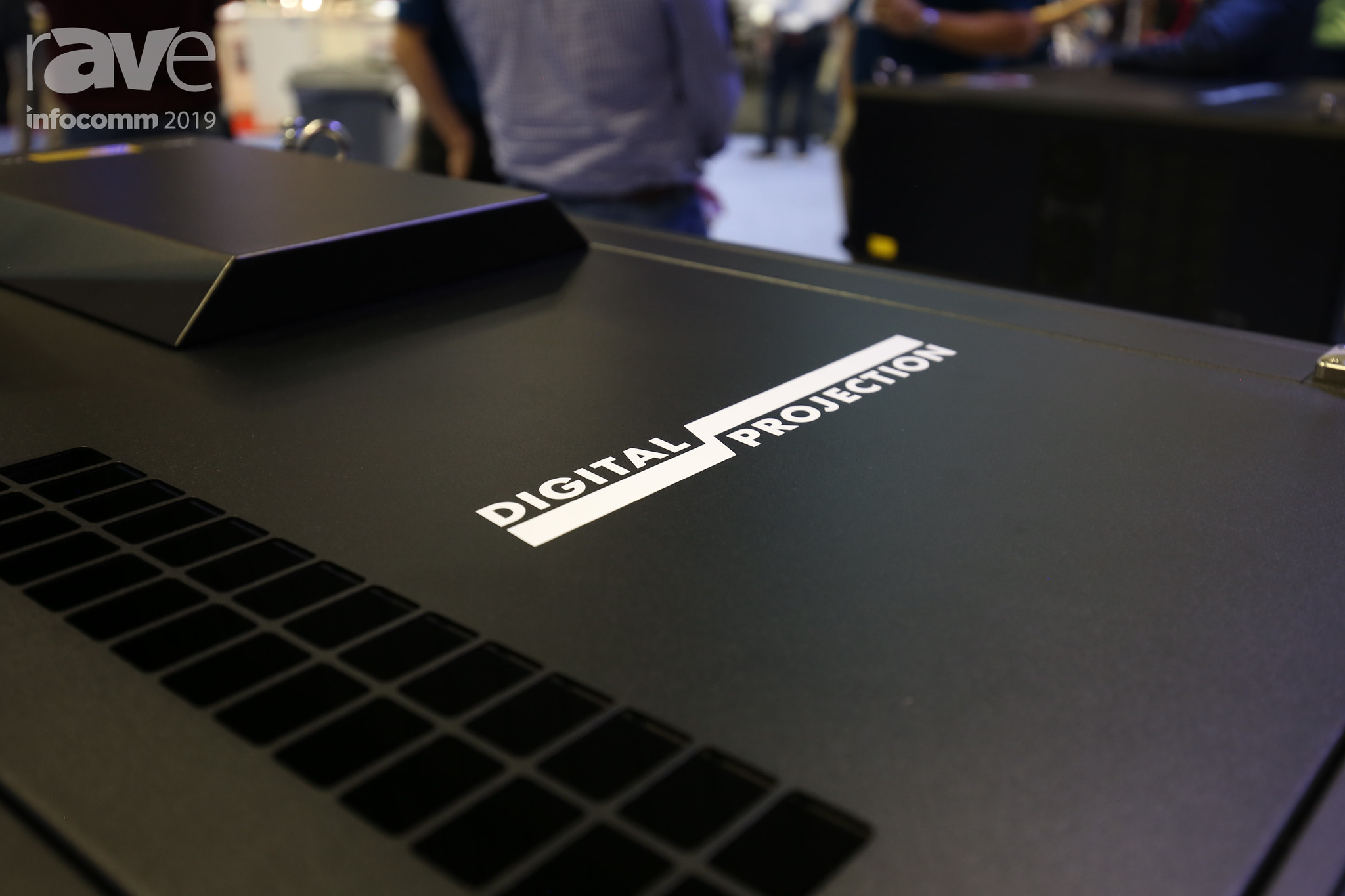 This matters as, historically, when Epson gets into a space, everyone else follows. And, of course, the signal routing companies on the show floor like Kramer, Crestron and Aurora were there with 4K systems as they have been. But, this year, unlike any other, they were all talking about — over-IP. (See next theme for more).
This matters as, historically, when Epson gets into a space, everyone else follows. And, of course, the signal routing companies on the show floor like Kramer, Crestron and Aurora were there with 4K systems as they have been. But, this year, unlike any other, they were all talking about — over-IP. (See next theme for more).
Speaking of Crestron, Where was AMX?: Noticeably missing from the InfoComm 2019 show floor was AMX. They did have a private suite, however. In fact, the suite had all the Harman brands — but not on the show floor. Hmmmmm. I’ll let you interpret that one yourself.
Wireless: This started out years ago as BYOD — thanks to Barco and ClickShare. But, now it’s wireless collaboration and BYOD. In a tiny booth manned by former Barco PR manager, Alison Maxson, was a company called ScreenBeam. Their entire presentation, for InfoComm 2019, was how they were cheaper and better than the ClickShare. They even had a competitive comparison chart showing their product up against the ClickShare and the Crestron AM200. Their big push was that they have a better story to tell regarding how secure their wireless technology is due to a partnership with Microsoft — much of it based on their guest-access feature — a feature, I might add, that Barco just added to their ClickShare line, too. And, the ClickShare is getting a big-time update at ISE 2020. I can’t tell you about it just yet, but you can bet I will be the first to report about it!
In other wireless news, HoverCam and Elmo both showed wireless document cameras. Elmo’s is perfect for entry-level or K-12 applications dubbed the MO-2 STEM (here’s a video I shot). It’s also Android-based and has some really cool AR (augmented reality) features. I am quite sure it’ll win one of our best of InfoComm Awards. It was too good not to. HoverCam had a wireless doc camera too, but I was more impressed with the Pilot X and Pilot 5 all-in-one wireless lecterns — not sure how to describe them other than to suggest you watch the videos here.
Experience: All the big booths were experiences — not products. And, Samsung, LG, Epson, NEC and Sony win the prize there.
 I actually did booth tour videos in three of the five, too. And, you actually get a feeling for how they presented to the InfoComm attendee by watching them as well as you get to see all their new stuff! If you’re interested in watching NEC’s booth tour just click on this link, the LG booth tour is here and the Epson booth tour is here. With Epson, we did something special as we shot the entire booth in VR, too! And, best of all, our VR booth tour is universally compatible with ANY VR headset or you can even see it via a web browser — seriously, check it out (we even embedded all the new product videos we shot on the show floor INSIDE the Epson VR Experience at InfoComm, too)! Enjoy it! Here you go.
I actually did booth tour videos in three of the five, too. And, you actually get a feeling for how they presented to the InfoComm attendee by watching them as well as you get to see all their new stuff! If you’re interested in watching NEC’s booth tour just click on this link, the LG booth tour is here and the Epson booth tour is here. With Epson, we did something special as we shot the entire booth in VR, too! And, best of all, our VR booth tour is universally compatible with ANY VR headset or you can even see it via a web browser — seriously, check it out (we even embedded all the new product videos we shot on the show floor INSIDE the Epson VR Experience at InfoComm, too)! Enjoy it! Here you go.
AV-over-IP: Obviously, this is a thing. There’s still no single standard — and likely won’t be — but over 40 manufactures were on the show floor with AV-over-IP products. And, 29 of them have SDVoE products — including one projector company, Christie Digital. Their entire booth was routed via SDVoE with one network and over 200 endpoints — including their most popular product that has an SDVoE detect input, the MicroTiles LED.
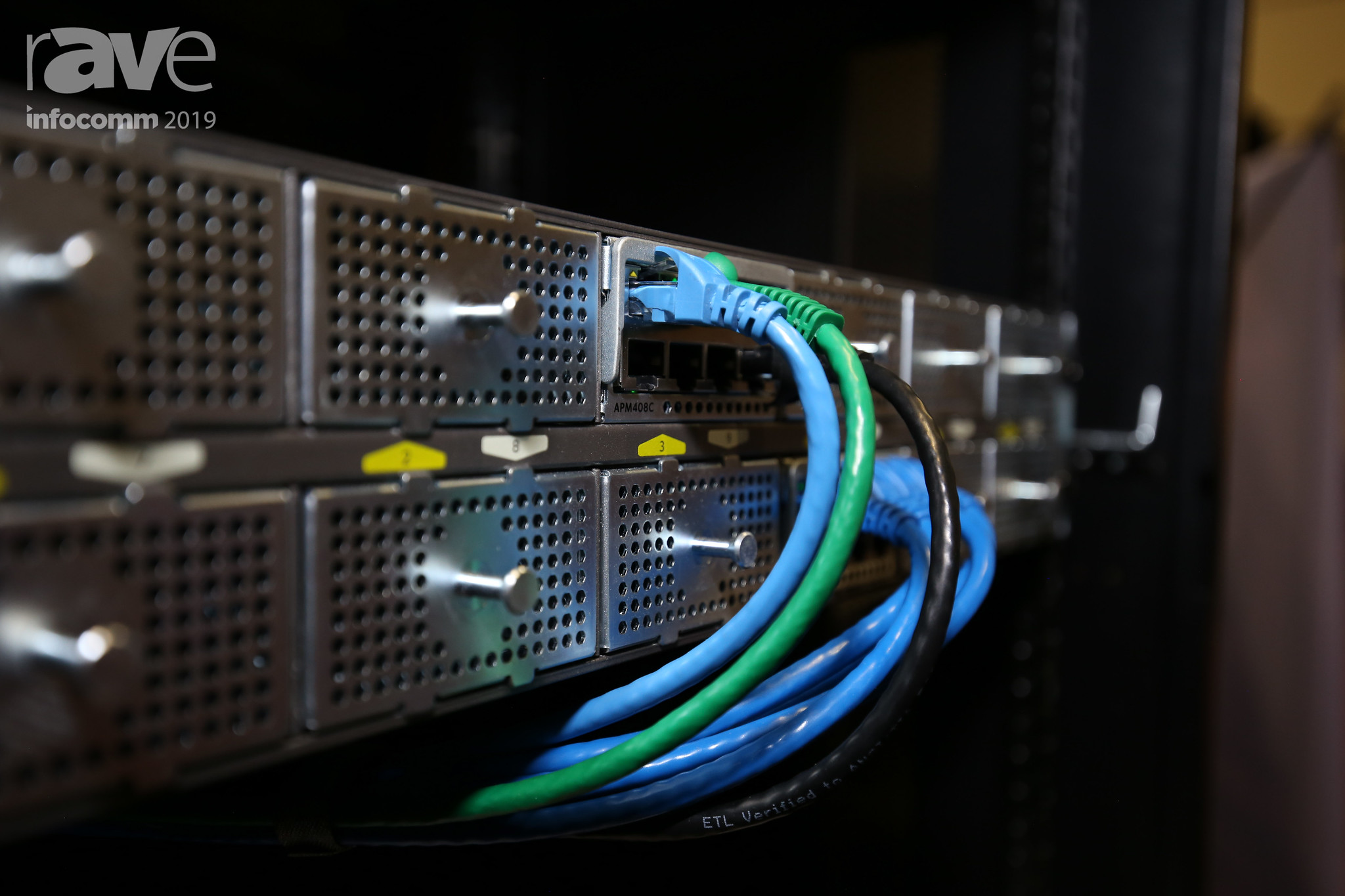 I should also mention that there was an SMPTE standards group with a booth, the AIMS Alliance. They’re pushing for an SMPTE standard — you can read all about it here. We also talked to Matrox, an adopter of the AV-over-IP standard from SMPTE called SD21 — he explained how they are supporting it in their AV-over-IP line in this video.
I should also mention that there was an SMPTE standards group with a booth, the AIMS Alliance. They’re pushing for an SMPTE standard — you can read all about it here. We also talked to Matrox, an adopter of the AV-over-IP standard from SMPTE called SD21 — he explained how they are supporting it in their AV-over-IP line in this video.
Big, Giant Images Rule: Over the past decade, InfoComm has attracted some giant LED products. And, most were outdoor LED — so bright, you needed sunglasses to walk by their booths. Now, that’s moved indoors with a plethora of fine-pitch products. All the LEDs can be categorized into two big, giant camps: LED and MicroLED, for the most part. The LEDs are now capable of doing pixel pitches as small as 0.6 millimeters (prototypes though). The finest pixel pitch that’s shipping, however, is the 0.7 mm products and the best on the show floor was Leyard’s. I did a booth tour of their booth too and the 0.7mm was featured — it’s here.
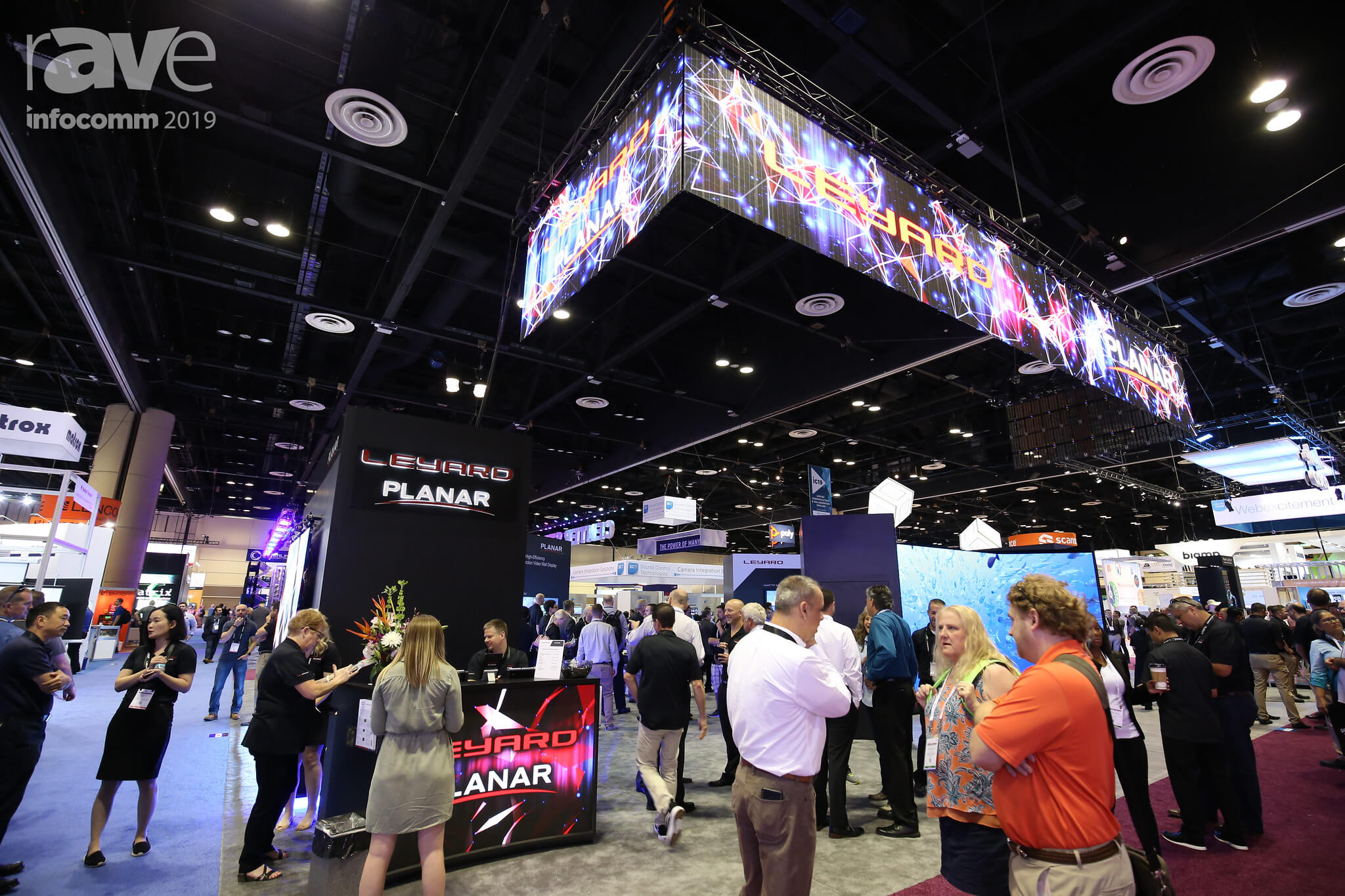 At 0.7mm, you can absolutely, positively use that to replace many indoor projection systems for meeting rooms, classrooms, etc. — assuming you have the budget for it! There is a price disparity of 5x — 10x in cost of LED vs. projection. But, the tradeoff is brightness and life span. Projectors are still getting cheaper and cheaper so it’s a becoming a tougher sell, for now.
At 0.7mm, you can absolutely, positively use that to replace many indoor projection systems for meeting rooms, classrooms, etc. — assuming you have the budget for it! There is a price disparity of 5x — 10x in cost of LED vs. projection. But, the tradeoff is brightness and life span. Projectors are still getting cheaper and cheaper so it’s a becoming a tougher sell, for now.
In the MicroLED camp, where there were two, there are now three. Add LG to that camp as they showed one at InfoComm. MicroLEDs are smaller than half of the thickness of a human hair — in fact, LG’s uses LEDs that are 50 microns — smaller than the period at the end of this sentence on your screen. Of course, Sony and Samsung already had one. Sony now has a portable version for rental/staging applications, too! Here’s an interview I did with Sony’s Kevin O’Connor — an expert on MicroLED at Sony. Anyway, with MicroLED, we’re literally looking at the future of displays. They’re stunning but also garner pricing like $300,000 for a 130″ version. You’ll start to see them in movie theaters if Samsung and Sony have their way.
Dante, Dante, Dante: There may not be a standard for AV-over-IP but there sure is one for audio-over-IP: Audinate’s Dante. Dante is used by over 340 companies now to make thousands of products send audio on and off a network. And, as you likely know, they want to help with video, too.
 They debuted Dante AV to the USA market at InfoComm 2019 — basically, it’s a 1G channel for routing video over the Dante network. You still need an encoder — someone’s encoder. I am told (even though Audinate won’t confirm this) that Audinate is building one and will launch it at ISE 2020.
They debuted Dante AV to the USA market at InfoComm 2019 — basically, it’s a 1G channel for routing video over the Dante network. You still need an encoder — someone’s encoder. I am told (even though Audinate won’t confirm this) that Audinate is building one and will launch it at ISE 2020.
SSD Mission Accomplished: The five-year mission to convert everyone from lamp-based projection to lLaser and LED projection is complete — and it only took four-years. Gone are the days of the lamp replacement companies exhibiting at InfoComm. In fact, if you wanted to buy a lamp-based projector, InfoComm would have been a terrible show to attend. It’s laser, laser, laser and some LED — with Casio leading the LED-charge. Speaking of Casio, they did launch a native 4K, sub-$7,000, 5,000 lumen projector — with a center-mounted lens, too! Epson, Sony, NEC, Christie, Barco, BenQ, Optoma and a handful of other companies showed native 4K laser projectors but DPI wins the resolution war as they had an 8K laser — you can see it here.
The Transparent Minority Report Effect: Remember that scene a the beginning of the movie Minority Report when Tom Cruise’s character, Chief John Anderton, is working on a large see-through display to catch pre-crime criminals? Well, LG, the leading transparent OLED manufacturer in the world, had a demo in their booth providing the best use-case for a transparent display since that movie debuts in 2002. The demo, which you can see the video of by simply clicking on this sentence, allows a customer to design-and-build an Audi car right before their very eyes. It’s kick-butt cool. Watch it! But, LG wasn’t the only one with transparent OLEDs on the show floor — enter Leyard and Planar with their all-new 55” OLED-based LookThru displays. This is second generation for them and was displayed with a cool floor-based LED superstructure that I loved!
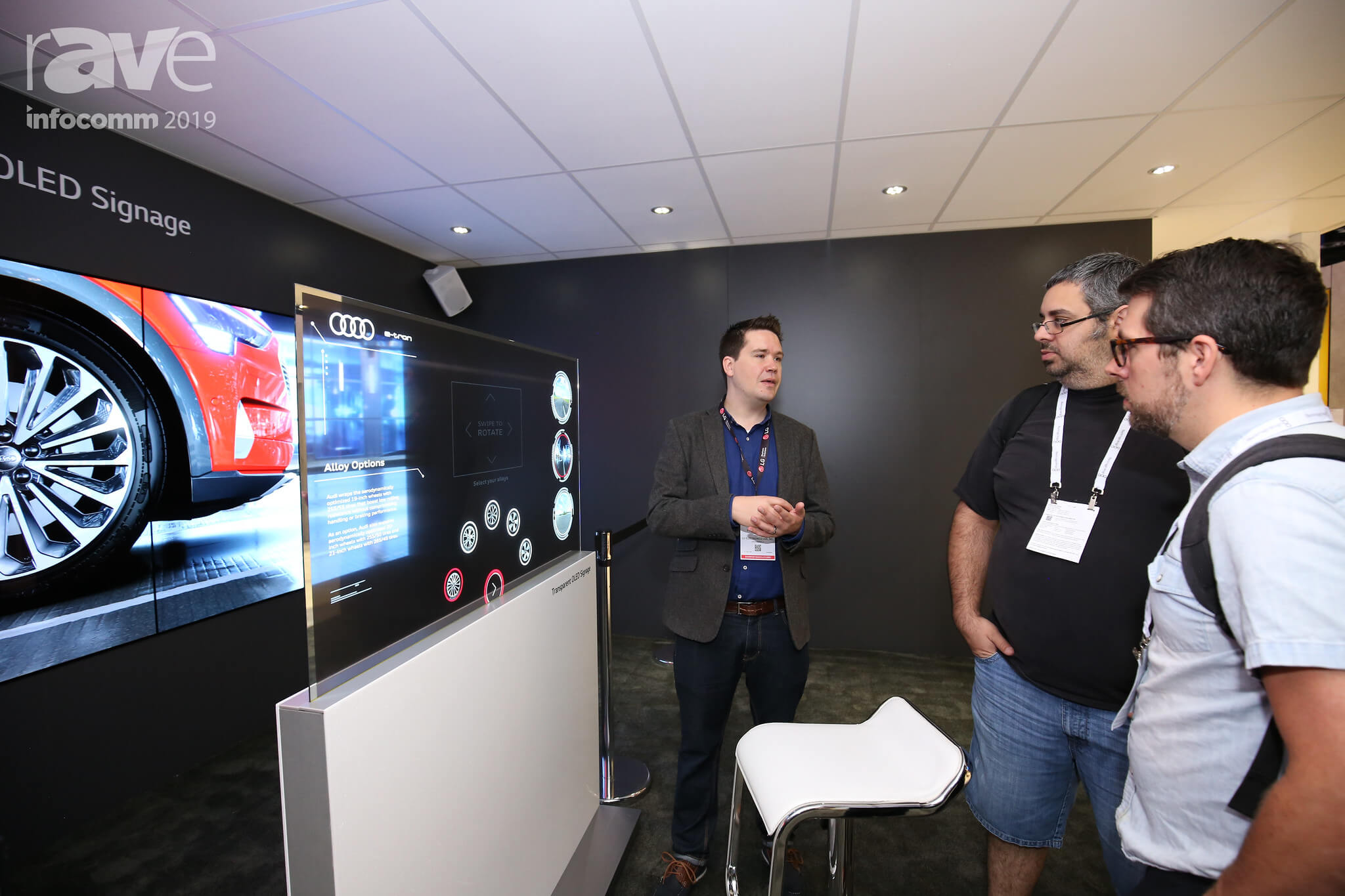 But, there were also transparent LEDs too! The most popular, again, were in the LG booth — but, in their case, the transparent LED is actually a film that literally sticks to glass. Check it out here and tell me this isn’t cool! I can imagine this will change the face of retail stores, one day. And, they were’t alone in this transparent film category — also, a small Shanghai-based start-up called TiegeTech showed an adhesive-based LED product — not as see-through as LG’s but it is a higher resolution. There were a plethora of LED companies with thin-frame LEDs that called their displays “transparent” whenever they were showing their wares — not totally transparent but, certainly have a lot of retail digital signage applications — they are all here.
But, there were also transparent LEDs too! The most popular, again, were in the LG booth — but, in their case, the transparent LED is actually a film that literally sticks to glass. Check it out here and tell me this isn’t cool! I can imagine this will change the face of retail stores, one day. And, they were’t alone in this transparent film category — also, a small Shanghai-based start-up called TiegeTech showed an adhesive-based LED product — not as see-through as LG’s but it is a higher resolution. There were a plethora of LED companies with thin-frame LEDs that called their displays “transparent” whenever they were showing their wares — not totally transparent but, certainly have a lot of retail digital signage applications — they are all here.
Pre-Packaged LEDs: Speaking of LEDs, now’s a good time to mention that one of the biggest trends in LED at InfoComm 2019 was pre-packaged systems (i.e., all-in-one LEDs). In other words, LED systems that come pre-packaged with the tiles, frame, audio, speakers, integrated video and audio processing, stand and simple, LCD monitor-like connectivity (e.g., HDMI). If you’re not sure what I mean, take a look at these two videos — this 130″ one’s from Optoma and this one, also 130″, is from LG. Nearly every major LED company had one including Absen, Samsung, NEC, Clear Touch, CreateLED and Unilumen.
Immersion/Digital Canvasing: Some five years ago, I started using the term “digital canvas” to describe what I saw as the future of these high resolution displays. Of course, I certainly see the value of a 4K or even an 8K display being image quality but, for me, even more important than that is pixel density. Technically, you may think they are the same thing, but they aren’t. Imagine taking a wall and, instead of putting up a screen that was appropriately spec’d for the size of the room to accommodate the least-favored viewers (those siting in the back-left and back-right corners of the room), you projected on the entire wall — wall to wall, floor to ceiling. In other words, creating a giant digital canvas that could project all your content for a meeting, simultaneously (i.e., a giant digital canvas) — think seamless video wall inside every room. Of course, using a video wall processor, we could have always done this, but if you blow-up a FullHD 1080p image to be 12’ high (ceiling height) and, thus, 21’ wide (for a 16×9 aspect ration to accommodate 1920×1080), then you’re left with much of the room — especially those sitting close to the screen — seeing a bunch of pixels rathe than a seamless image.
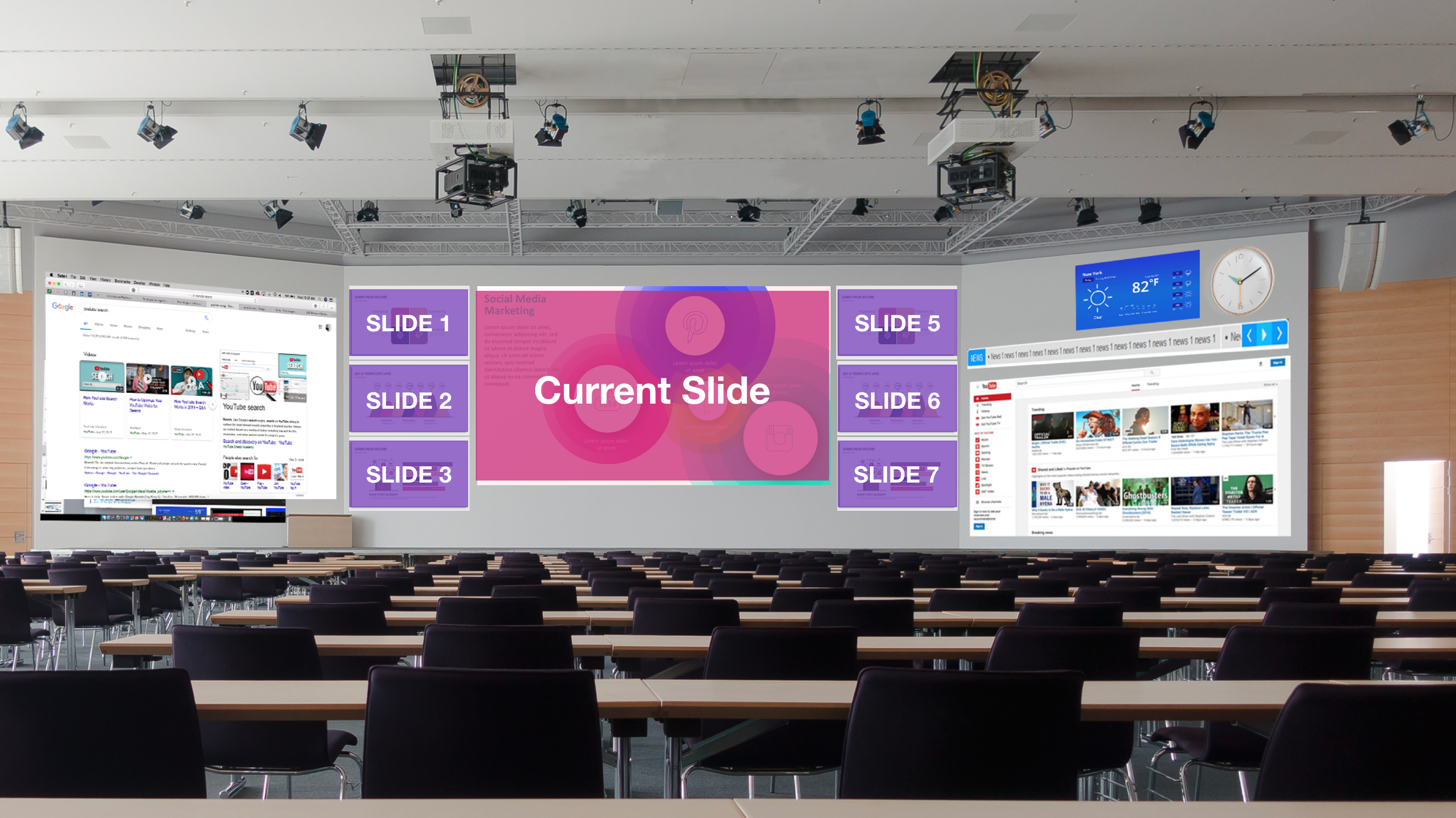 But now that projection is moving towards 4K (3840×2160) UHD native resolutions, when you blow that up, that’s four times the density of pixels on that same screen/image size (21’ wide by 12’ high) and you end up with a beautiful, pixel-less digital canvas. Think IMAX imaging in a room — full IMMERSION. Here’s an image of an immersion-based classroom to illustrate what I’m talking about.
But now that projection is moving towards 4K (3840×2160) UHD native resolutions, when you blow that up, that’s four times the density of pixels on that same screen/image size (21’ wide by 12’ high) and you end up with a beautiful, pixel-less digital canvas. Think IMAX imaging in a room — full IMMERSION. Here’s an image of an immersion-based classroom to illustrate what I’m talking about.
Well, it’s finally become a thing. Nearly every projector manufacturer showing 4K projectors talked about how the pixel-density of 4K increased the content capabilities of projection. Of course, most of them called this “immersion.” And, they’re right — maybe that’s a better term than digital canvassing. Either way, immersing someone in content means they’re transported inside the meeting in an entirely new way. And, for Millennials and Gen-Z’ers who grew up in immersive VR-style gaming or who regularly use two screens at the same time, this type of immersion is normalized for them. But, for older AV’ers, this could be overwhelming — some people may just prefer the concept of just having one thing on the screen at one time. But, isn’t it nice to be well on our way in truly immersive experiences? And, InfoComm had plenty of them.
1,640 Videos: You didn’t get to go to InfoComm? Well then, let us take you there! Our team of rAVe Videographers shot 1,640 videos in and around InfoComm 2019 and ALL of them are in one place on one site — our InfoComm 2019 Microsite: rAVePubs.com/InfoComm2019. Oh, we also recorded 101 podcasts (yes, 101), wrote up 350+ new product news stories and took 2,000+ photos while on the show floor! So, enjoy “virtually” going to InfoComm 2019 — without the Orlando heat!



